Understanding Mesh Bird Netting
Mesh bird netting is a versatile and essential component for constructing aviaries, providing a safe and secure environment for various bird species. Typically made from materials such as polyethylene or nylon, this netting is designed to be lightweight yet durable, making it suitable for both outdoor and indoor applications. The high strength-to-weight ratio of these materials ensures that the netting can withstand environmental elements, such as wind and rain, while remaining unobtrusive and maintaining visibility.
One of the significant advantages of using mesh bird netting in aviaries is its excellent durability. The netting is resistant to UV rays, which helps prevent degradation over time. This quality is particularly beneficial for outdoor installations, where exposure to sunlight is common. Furthermore, many types of mesh netting are treated to repel moisture, which reduces the risk of mold and mildew growth, leading to a healthier space for birds.
Safety is a priority when housing birds, and mesh netting offers a secure barrier that keeps them contained while allowing for airflow and sunlight. Its open weave allows for natural light to filter through, creating a pleasant environment for the birds without compromising their safety. Additionally, mesh netting is available in various hole sizes, which can be selected based on the specific species housed within the aviary. This versatility ensures that smaller birds cannot escape while still allowing for ample visibility for both the birds and their caretakers.
Given its array of beneficial properties, mesh bird netting is not exclusively limited to aviary use. It is also commonly employed in gardens to protect plants from birds, as well as in other settings where keeping animals contained or protected is paramount. From providing a secure haven for birds to enhancing the natural aesthetics of an aviary, mesh bird netting is an invaluable asset for aviculture enthusiasts.
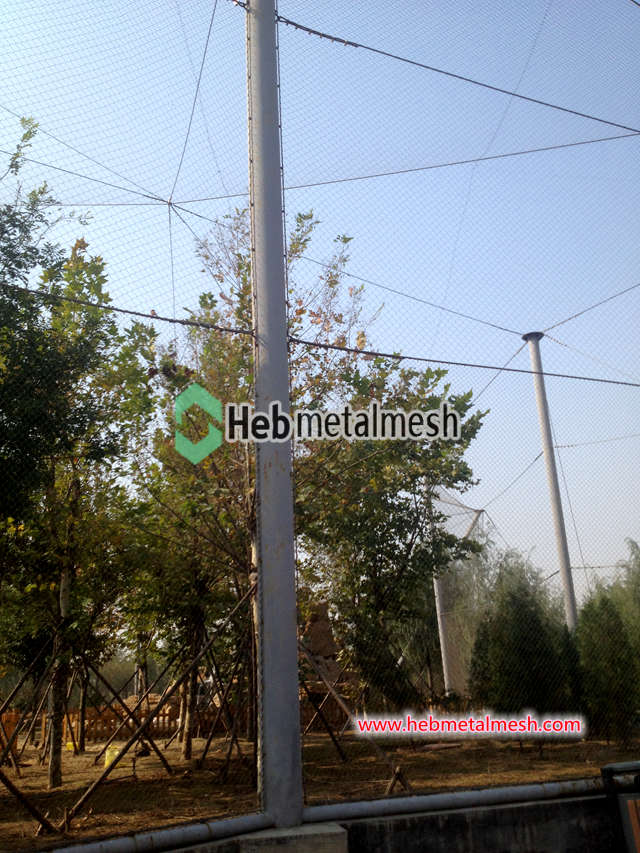
Who Searches for Mesh Bird Netting?
Various individuals and groups actively seek out mesh bird netting for their diverse needs, all of which are rooted in their interest or responsibility towards birds. Primarily, aviary owners form a significant segment of this audience. These individuals or organizations maintain bird sanctuaries or breeding facilities where safety and enclosure integrity are paramount. For them, mesh bird netting serves as an essential protective layer, preventing escape and ensuring the birds’ well-being while allowing adequate ventilation and sunlight to penetrate.
Bird enthusiasts make up another group that often searches for mesh bird netting. This category includes hobbyists who may have dedicated spaces for keeping exotic birds at home. They seek high-quality netting that not only guarantees the safety of their feathered friends but also meets aesthetic and functional criteria. Many of these enthusiasts are well-informed and look for durable, UV-resistant materials capable of withstanding varying weather conditions.
Pet store owners are also key stakeholders interested in mesh bird netting. They require reliable suppliers to offer safe and secure enclosures for the birds sold in their shops. The demand for netting solutions that provide both security and visibility is crucial for these retailers, as they need to reassure potential buyers about the well-being of the birds they are purchasing.
Lastly, wildlife conservationists may find themselves in search of mesh bird netting for bird rehabilitation projects. Their focus is often on creating temporary enclosures that facilitate the recovery and reintroduction of injured or threatened bird species into their natural habitats. This group prioritizes environmental safety and minimal impact on wildlife, seeking netting solutions that align with ecological standards.
Why Wire Rope Mesh is Ideal for Aviary Panels
When it comes to designing aviaries, the choice of materials is crucial for ensuring the safety and well-being of the birds housed within. Among various options available, wire rope mesh stands out as an exemplary choice for aviary panels. This type of mesh offers a unique combination of strength, flexibility, and durability, making it particularly suitable for avian environments.
One of the most significant advantages of wire rope mesh is its exceptional strength. Constructed from high-tensile steel cables, this form of mesh can withstand considerable pressure, making it resistant to damage from both birds and external elements. This structural integrity ensures that the aviary remains safe and secure, reducing the risk of escape or predation. The robust design also grants peace of mind to aviary owners, knowing that the mesh will not easily wear out over time.
In addition to its strength, wire rope mesh also offers impressive flexibility. This feature allows for easy adaptation to various aviary designs, whether it involves creating custom shapes or fitting panels into irregular dimensions. The versatility of wire rope mesh not only simplifies installation but also allows for creative architectural designs that can enhance the aesthetic appeal of the aviary.
Another critical benefit of utilizing mesh bird netting in the form of wire rope is its ability to facilitate adequate airflow and visibility. The open structure of the mesh allows for proper ventilation, which is essential in maintaining a healthy environment for the birds. Good airflow prevents the buildup of humidity and stagnant air, both of which can lead to respiratory issues in birds. Furthermore, the transparent nature of the wire rope mesh ensures that birds can enjoy their surroundings while allowing keepers and visitors to observe their behaviors without hindrance.
Customizable Roll Sizes of Bird Aviary Netting
One of the most appealing aspects of mesh bird netting is the flexibility it offers in terms of customization. Customers can order netting in various roll sizes according to their specific needs, all without incurring additional costs. This level of adaptability ensures that bird enthusiasts can design aviaries that accommodate the unique dimensions of their spaces, allowing for creative architectural solutions.
When selecting mesh bird netting, it is crucial to consider the size and design of the aviary. Traditional bulk netting often comes in standard sizes, which may not align with the measurements required for specific installations. Custom roll sizes eliminate this issue, making it easier for customers to obtain the precise amount of netting needed. This not only reduces waste but also minimizes the potential for gaps or uncovered areas that could compromise the safety of the birds.
Furthermore, the option to customize roll sizes is especially beneficial for those constructing larger aviaries or multi-tiered designs. Standard sizes can lead to functional challenges, as builders may find themselves needing to piece together smaller sections of netting. In contrast, the ability to order netting in tailored lengths ensures a seamless and effective installation process. This attention to detail enhances the overall integrity of the aviary, making it secure for its avian inhabitants.
By allowing customers to specify their preferred dimensions, suppliers of mesh bird netting empower aviary creators to achieve their desired aesthetic and practical outcomes. Whether for residential, commercial, or educational aviaries, the opportunity to customize roll sizes provides an invaluable resource for bird lovers keen on constructing safe and visually appealing living spaces for their feathered friends.
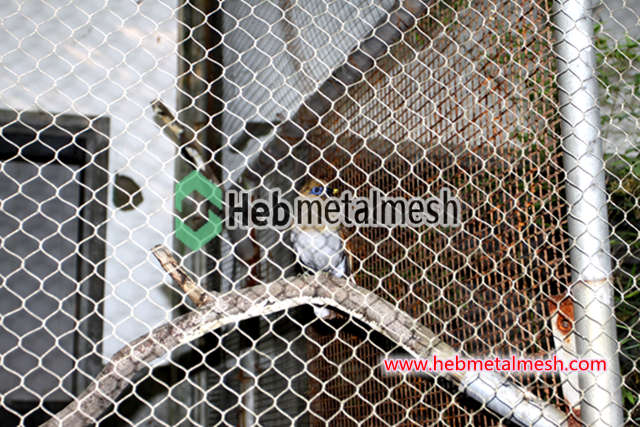
Available Mesh Sizes for Every Need
Choosing the appropriate mesh bird netting dimension is critical when it comes to creating a safe and comfortable aviary for your birds. Various sizes of mesh are available, including 1 inch, 3/4 inch, 1.5 inch, and 2 inch, each serving specific needs based on the species of birds being housed.
The 1 inch mesh size is ideal for housing smaller birds, such as canaries and finches. This size provides strong protection against predators while still allowing ample airflow and visibility for the birds. It ensures that smaller birds are safe from harassment by larger birds or any other potential threats. Moreover, this size also helps keep out smaller pests, ensuring a clean living environment.
In contrast, the 3/4 inch mesh size offers a slightly tighter knit which is suitable for very small breeds or juvenile birds. This dimension provides enhanced protection against smaller pests like insects while minimizing the possibility of escape for young birds. This is particularly useful in environments where breeders aim to ensure that fledglings remain safe and contained as they grow.
The 1.5 inch mesh size is commonly used for medium-sized birds, including parakeets and cockatiels. These birds require a balance between security and comfort, allowing for better visibility and airflow without compromising their safety. This size is ideal for aviaries that house mixed species, as it can accommodate various birds while still deterring larger predators.
Finally, the 2 inch mesh size is more suited for larger birds, such as parrots and macaws. While still providing adequate protection, the larger openings facilitate enhanced movement and interaction among the birds. This size ensures that the birds are comfortable and can engage in their natural behaviors without feeling restricted.
Each of these mesh sizes serves a distinct purpose, highlighting the importance of choosing the right bird netting to ensure that your aviary is both protective and accommodating.
Quality Assurance: Our Factory Production Standards
The manufacturing of mesh bird netting involves a rigorous process designed to ensure high standards of durability and safety. At the outset, the raw materials selected for production undergo comprehensive testing to confirm their resistance to environmental elements that could compromise their integrity over time. The primary material used is high-density polyethylene (HDPE), which has been proven to be both lightweight and strong. This initial step is crucial as it sets the foundation for creating netting that can withstand varying weather conditions.
Once the raw materials have been deemed suitable, the production line employs advanced machinery that meticulously weaves the strands of netting. This automation not only increases efficiency but also eliminates human error that could lead to inconsistencies in the final product. Each roll of mesh bird netting is crafted with precision, ensuring that the mesh openings are uniform and adequately sized to keep unwanted birds out while allowing the desired species to thrive within the enclosure.
Throughout the manufacturing process, our quality control team actively monitors every phase of production. They employ various testing methods, including tensile strength tests and UV resistance checks, to evaluate the overall quality. Any product that does not meet our strict safety criteria is immediately discarded or reworked. Additionally, we utilize third-party inspections to provide an unbiased assessment of our manufacturing practices, enhancing our commitment to quality assurance.
Finally, before reaching the end consumer, each batch of mesh bird netting is subjected to a thorough inspection. This double-check ensures that only the highest standard of products leave the factory, providing customers with peace of mind regarding their investment. By maintaining strict quality control measures, we can assure customers that our bird netting will perform reliably in protecting aviaries and promoting a safe environment for birds.
Fast and Reliable Delivery Options
When considering the purchase of mesh bird netting for your aviary, one critical component to evaluate is the delivery service offered by suppliers. Fast shipping times and reliable delivery options are essential factors that contribute to an overall positive customer experience. The effectiveness of these services can significantly influence your ability to install the netting promptly and ensure proper protection for your birds.
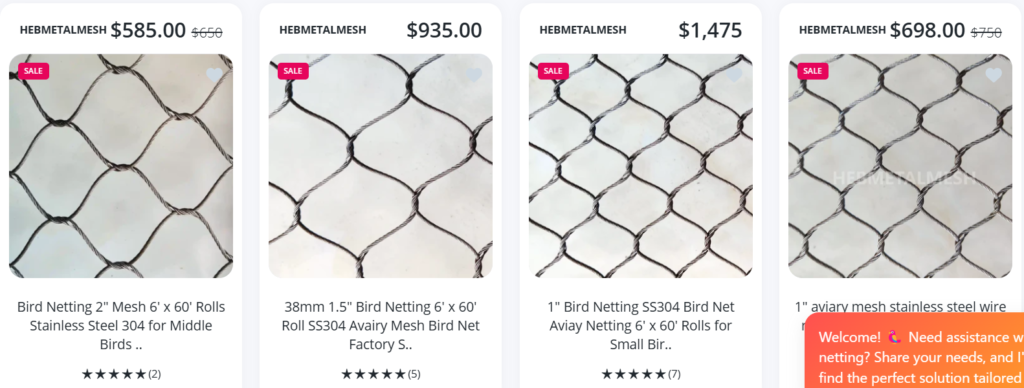
Many reputable suppliers prioritize quick shipping, often providing expedited options to meet the urgent needs of their customers. Some companies offer same-day shipping for orders placed before a certain time, ensuring that you receive your mesh bird netting within a short timeframe. When selecting a supplier, it is advisable to check their shipping policies and timelines to understand how quickly you can expect the product to arrive at your location.
Reliability is equally important in the delivery process. Suppliers that have a solid reputation for on-time delivery can give buyers confidence that their orders will arrive as promised. Companies that utilize established couriers and tracking systems ensure that you can monitor your shipment’s progress, allowing for better planning during installation. Additionally, selecting a vendor that provides secure packaging is essential. Proper packaging protects the mesh bird netting from damage during transit, upholding the integrity of the product upon arrival.
Furthermore, many suppliers will offer return or exchange policies should any issues arise with delivery or product quality. This additional layer of assurance can provide peace of mind during the purchasing process. When investing in mesh bird netting for your aviary, opting for suppliers that combine speed, reliability, and careful packaging will enhance your overall experience and support the successful establishment of a secure environment for your birds.
How to Properly Install Mesh Bird Netting
Installing mesh bird netting requires careful planning and execution to ensure the safety of the birds while maximizing the netting’s effectiveness. Begin by gathering the necessary tools: a measuring tape, scissors, utility knife, hammer, nails, or screws, and a sturdy ladder. Additionally, you may want to consider safety gloves and eye protection. Each tool will assist in a seamless installation and minimize any potential hazards.
The first step in the installation process is measuring the area where the mesh bird netting will be applied. Accurately measure the dimensions of your aviary, accounting for any irregularities or protrusions. After obtaining the measurements, select a type of mesh bird netting that suits your needs. It is important to choose a durable, UV-resistant product that can withstand outdoor environments while ensuring it is appropriate for the bird species you are housing.
Once you have the necessary materials and tools ready, cut the mesh netting to the required size, allowing for a little excess to ensure a complete coverage. If the area is particularly large, you may need to join multiple pieces of netting, ensuring a tight fit with minimal gaps where birds could escape or predators could enter.
Next, secure the netting to the frame of the aviary. This can be done using nails or screws, depending on the structure’s material. Begin at one corner and work your way around, keeping the netting taut to avoid sagging. It is crucial to inspect the netting during this process for any areas that may need extra securing gear, such as clips or additional fasteners.
Toward the end of the installation, double-check all seams and edges to ensure they are tight and properly secured. This additional step helps prevent potential breaches that could compromise the safety of the birds. By following these structured steps, you will achieve a robust installation of mesh bird netting that provides a very safe environment for your avian companions.
Conclusion
When selecting the appropriate mesh bird netting for your aviary, it is crucial to assess various factors that will affect both the well-being of your birds and the overall functionality of the space. The first consideration should be the type of birds that will be housed in the aviary, as different species have varying requirements regarding space and safety. For instance, larger bird breeds may require more robust netting, whereas smaller birds might thrive in a finer mesh configuration.
Furthermore, it’s important to evaluate the specific environmental conditions in which the aviary will be placed. Factors such as exposure to harsh weather, potential predators, and UV exposure will influence the type of mesh bird netting you should consider. Durable materials that can withstand the elements, like weather-resistant polypropylene or polyethylene, are often recommended. A reliable option for these needs is wire rope mesh, which offers strength and flexibility while ensuring the safety of the birds.
Additionally, budgetary constraints often play a significant role in decision-making. While it’s tempting to opt for the most affordable option, investing in high-quality mesh can save money in the long run through reduced maintenance and repair needs. Choosing wire rope mesh from a reputable manufacturer guarantees durability and performance, making it a sensible investment for any aviary owner.
Ultimately, optimal mesh bird netting selection must align with your aviary’s specific requirements. Taking into account the species of birds, environmental factors, and financial considerations will help ensure a safe and inviting habitat for your feathered friends. Prioritizing quality, particularly through the use of wire rope mesh, enhances the aviary’s functionality while safeguarding its inhabitants.
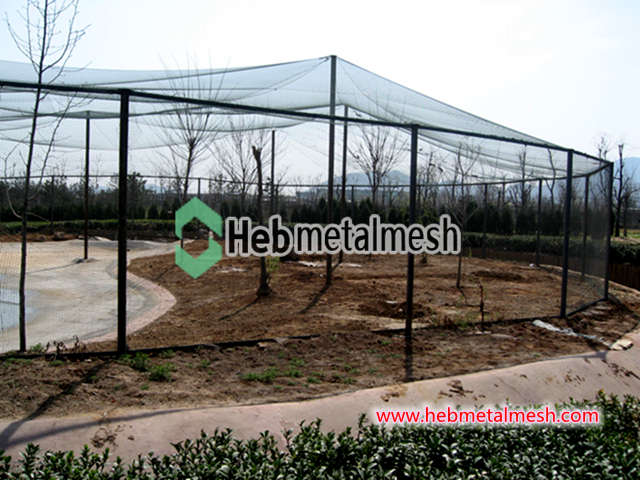
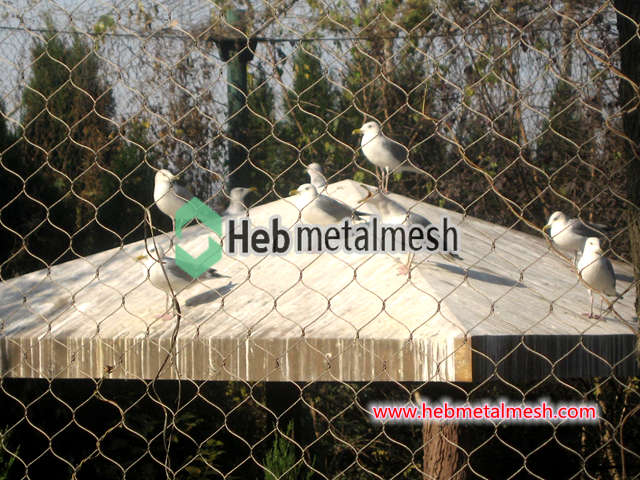
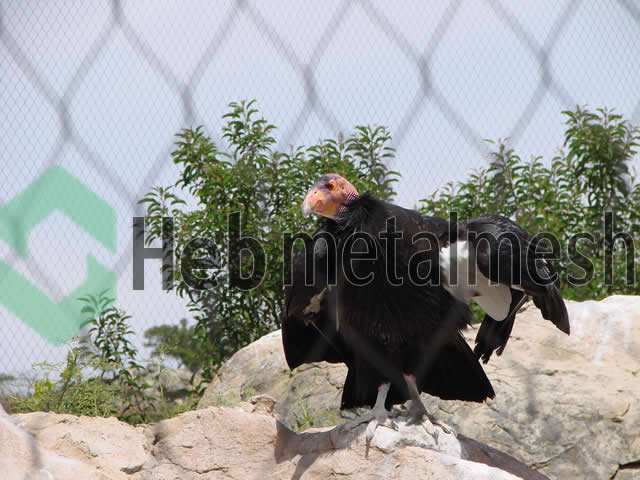
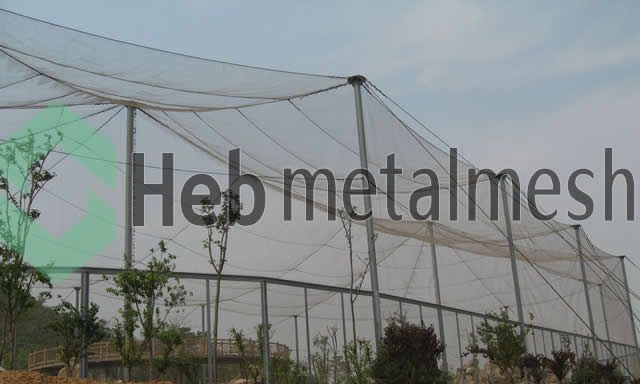
Pingback: How do you define bird proof netting - Top Shade Net Plastic Mesh and Bird Net Supplier | OMB Textiles